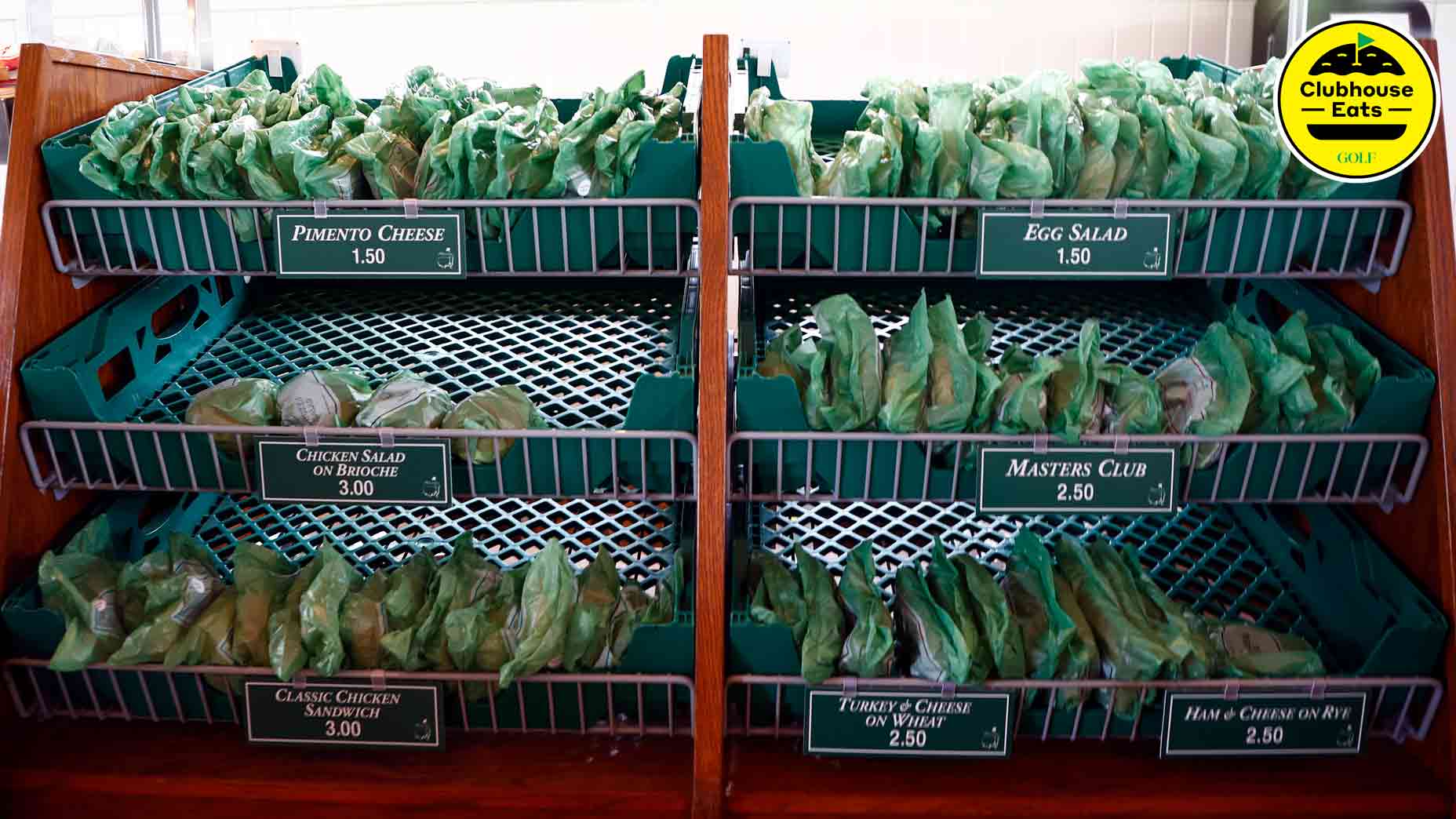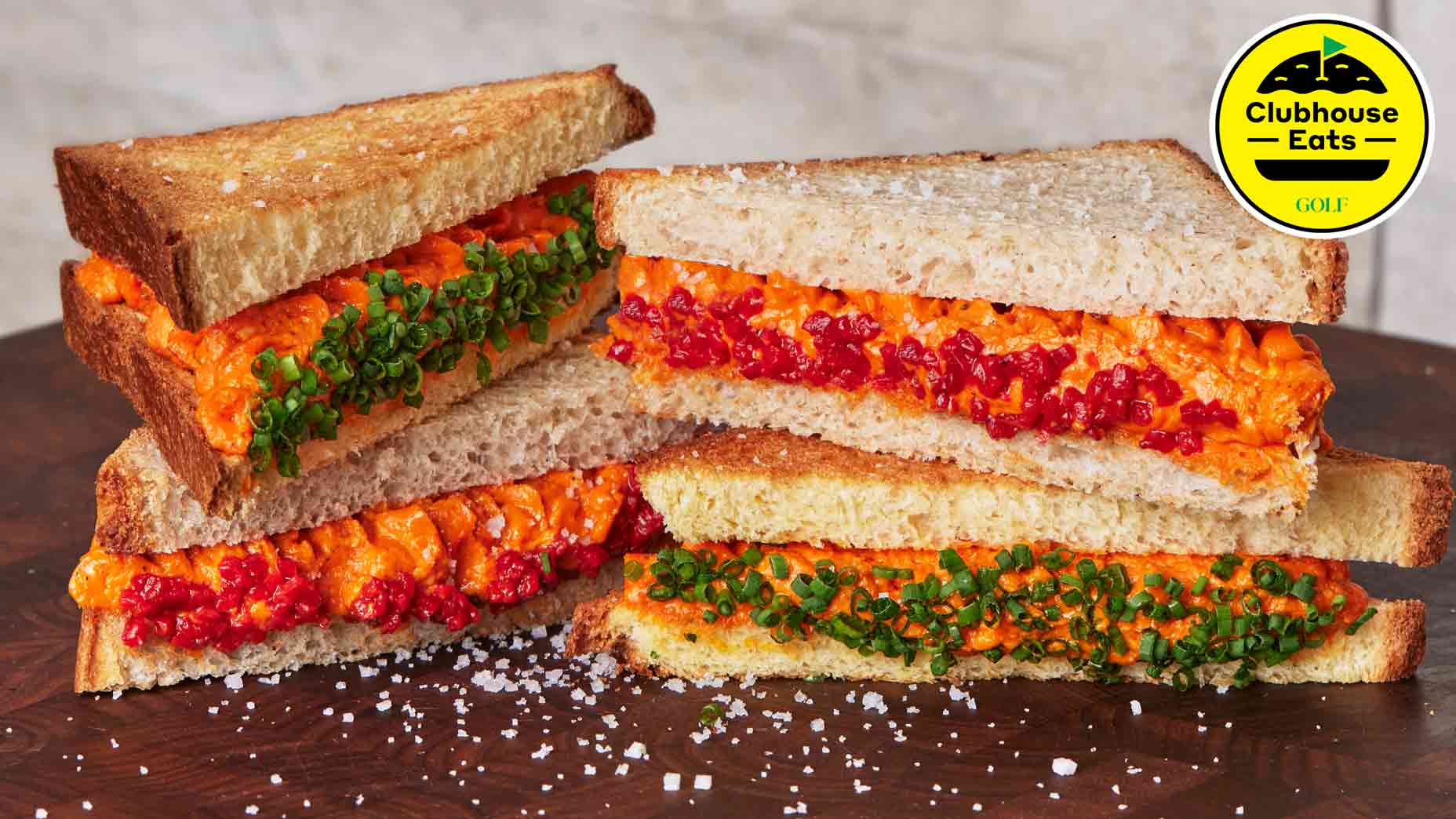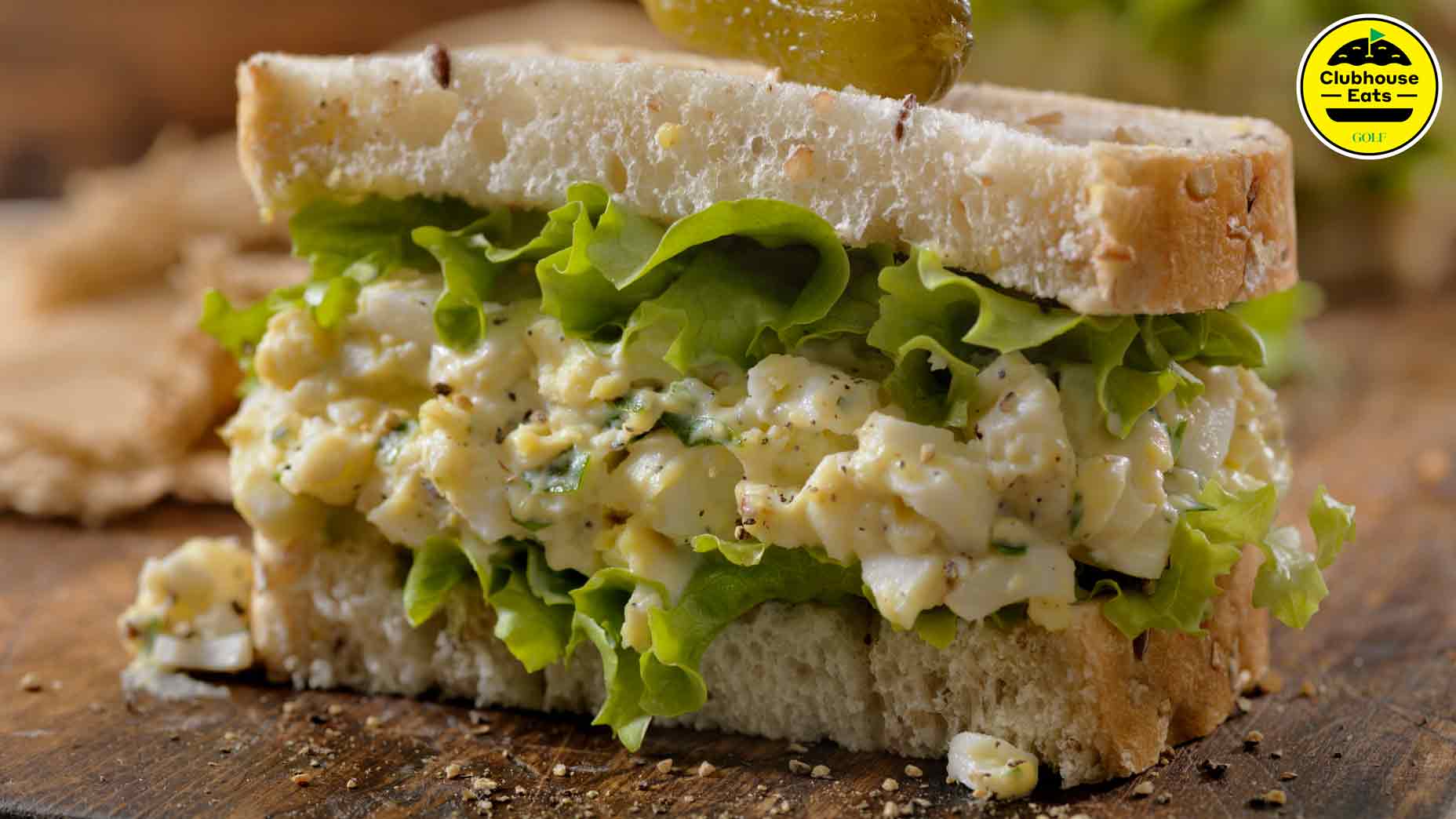As famous as Augusta National is for its iconic holes, and as much as a handful of memorable shots spring to mind whenever a spirited golfing conversation focuses on the Masters, the first major of the year is almost equally famous for the flavorful bites that patrons enjoy during that magical week each April.
Much is made of the championship’s green jacket, which only an illustrious few have slipped over their shoulders; but when it comes to iconic Masters fare, millions of lucky attendees have held the Masters’ top three dishes in their hands.
Here, we offer some guidance to making the championship’s most popular sandwiches, whether they feature fried chicken, pimento cheese or egg salad.
How to make a classic southern-fried chicken sandwich
With the championship fast approaching, we knew better than to reach out to Augusta National for guidance on making an excellent southern-fried chicken sandwich. The exclusive club conceived by Bobby Jones has more important things to focus on. Instead, we ventured 150 miles down the road to Jones’ longstanding golfing home, the Atlanta Athletic Club, where executive chef Eric DaRin offered sage advice.
As he explained, a properly crispy chicken sandwich that’s still moist and juicy requires a proper 24-hour brine. For that liquid, Chef DaRin starts with a quart of water, then adds 1/4 cup of Kosher salt, 1/8 cup of brown sugar, and two teaspoons each of garlic powder, onion powder, black pepper, cumin, thyme, and smoked paprika.
The flour mixture used to coat the chicken before frying is also key. For that, Chef DaRin thoroughly mixes together about a pound of all-purpose flour with 1/4 cup of cornstarch and two teaspoons each of the following spices: Kosher salt, black pepper, garlic powder, onion powder, and smoked paprika. As DaRin explains, the cornstarch keeps the chicken light and crispy once its fried. “Once we take it out of the brine, we dredge it in the flour mixture,” he says, “but we let it set for a few minutes and then re-flour it again which makes it extra crispy.”
Michelin-star chef says the Masters’ famous pimento-cheese sandwich can’t be improvedBy: Josh Sens
As for the actual frying, DaRin likes to use canola oil heated to 350 degrees, which typically requires between 7 and 10 minutes of cooking time. If you’re concerned about over- or under-cooking your chicken, keep an eye on the bubbles that form at the surface of the oil, which Chef DaRin explains is evidence of moisture being extracted from the meat. When the frequency of those bubbles slows down considerably (or they stop forming altogether), the chicken is likely done.
Although you can achieve satisfying results using chicken breasts, Chef DaRin prefers chicken thighs, which impart more flavor, are naturally juicier and work better for a sandwich because they’re thinner and have more surface area. He also encourages at-home cooks to take a restrained approach when condiments enter the fray. “Too many times, people try to load it up with a bunch of stuff that’s not necessary,” he says. “Simplicity is key.”
How to make Augusta National’s famous pimento cheese sandwich
The pimento cheese sandwiches at Augusta National are most famous for their affordable price, but they’re also damn good.
Fortunately, thanks to the Junior League of Augusta, Georgia, which has published a series of Augusta National-focused cookbooks, enthusiastic Masters fans can easily replicate the unmistakable filling used for those southern staples. We’ve included the recipe below, which can be found in Par 3 Tea-Time at the Masters, the third and final installment of that cookbook series.
How to make Augusta National’s famous pimento cheese sandwichBy: Jessica Marksbury
Augusta National-style Pimento Cheese Sandwiches
*Serves four
Ingredients:
3 cups shredded white cheddar cheese
2 cups shredded yellow sharp cheddar cheese
1 cup shredded Parmesan cheese
4 oz. crumbled blue cheese
1 jar (4 oz.) slice pimentos, drained
1 cup light mayonnaise
2 tbsp. Dijon mustard
1 loaf of white bread
Directions:
Combine cheese, mayonnaise, mustard, and pimentos in a food processor and process until smooth.
Transfer the mixture to an airtight container and chill in the refrigerator.
When ready to serve, spread generously on sliced bread.
How to make a perfect egg salad sandwich
Golfers most often play their best when they keep their swing thoughts simple. Augusta National, by comparison, achieves success with its egg salad sandwiches by employing a similar strategy. As far as we can ascertain, the club’s recipe shines for being nothing more than medium-boiled eggs, mayonnaise, salt and pepper.
The secret to making an Augusta National-grade egg salad sandwich, according to a golf-club chefBy: Josh Sens
To learn how to cook those eggs properly, we sat down with Garret Martindale, executive chef at Sequoyah Country Club in Oakland, Calif., who explains that exceptionally creamy egg salad is made from eggs whose yolks are cooked through no more than 80 percent. Don’t worry, getting there is easier than it sounds.
Start with a saucepan of generously salted cold water, add the eggs (making sure that they’re covered by at least one inch of water), and bring to a boil over high heat. Once the water reaches a rolling boil, cook the eggs for five minutes, then immediately transfer them to an ice bath. Peel the eggs once they’re thoroughly cooled, then, using an egg slicer, chop them into even pieces, rotating the egg 90 degrees after each cut.
When it comes to the mayonnaise, Martindale encourages home cooks to splurge on something a bit more exotic than Hellmann’s. In particular, he recommends Kewpie, a Japanese mayo that’s creamier than ordinary brands thanks to its higher fat content. He also mixes 1/2 a tablespoon of mayo for every egg used.
But don’t overlook the bread, which Martindale insists matters just as much as the mayonnaise. The chef’s first choice is milk bread, which he describes as feathery and faintly sweet. Brioche also works well, and even a traditional, old-fashioned white bread gets the job done, though Martindale advocates that you should think like a five-year-old and remove the crust. As he explains, you don’t want anything that competes with the flavor of the egg salad itself.













